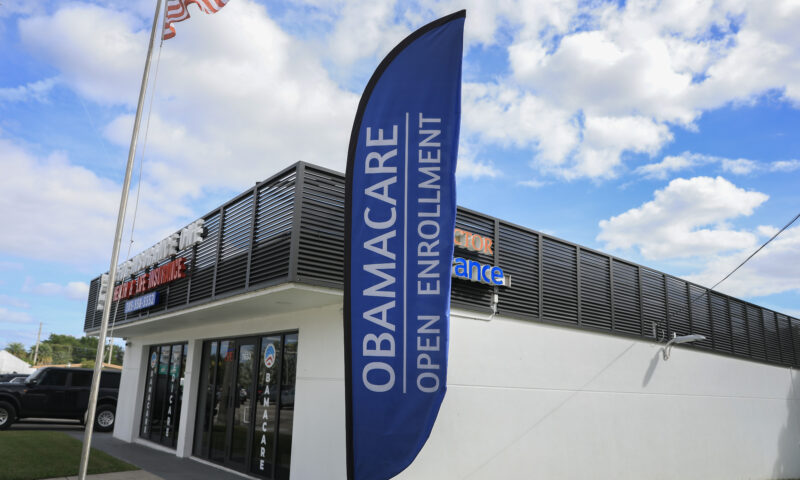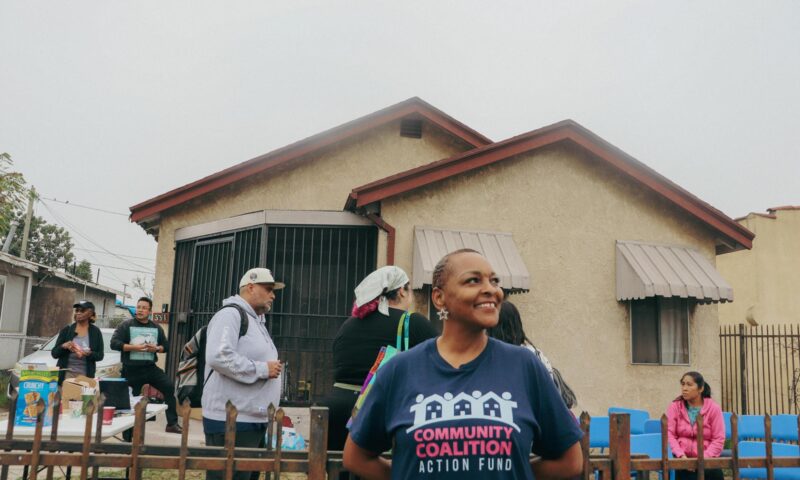Less than 18 months from the end of his second term, California Gov. Gavin Newsom is stirring up talk of a presidential run with a series of actions and shifting stances.
There’s his recent visit to the early Democratic primary state of South Carolina, his changing take on transgender athletes, the loosening of some environmental regulations and especially his dial-back of public health care access for undocumented immigrants.
Such moves might make sense for a politician who has succeeded with a California electorate if he pivots toward a national one, but they result in real-world consequences in his home state.
For one, a lot of Californians can expect to lose their health insurance, which is odd given that many of those same people have health insurance thanks to Newsom.
Nearly 1 million state residents are expected to disappear from the rolls of Medi-Cal, the state’s health care insurance for low-income earners, according to the Center for Labor Research and Education at the University of California, Berkeley. The labor center estimates 900,000 will lose their health care in the next two years and a total of 1 million over the long term — more than 2% of the entire population of California.
The state budget signed into law on June 27 would require most undocumented adults — those between the ages of 19 and 59, who currently get free health care — to start paying as much as $360 annually for Medi-Cal coverage. The new premium for undocumented adults with very low incomes is slated to go into effect at the start of 2027.
The change was part of Sacramento’s effort to balance the state budget, and the policy change is accompanied by another one that will make it impossible for new enrollment by undocumented adults starting in 2026. This means they will have no public health care option.
As part of the tightening of the purse strings, another change is coming: If an undocumented Medi-Cal recipient misses a premium payment, he or she must reapply within three months or risk losing access to Medi-Cal.
Diana Douglas, director of policy and legislative advocacy at Health Access California, a statewide health care consumer advocacy group, laid out what this might mean for low-income Californians. “Many will just go uninsured, forcing them to the ER for basic care, or dying younger from preventable illnesses,” Douglas said in a late June statement following the announcement of Newsom’s agreement with legislators on next year’s budget.
“This budget deal breaks the promises made by our state leaders,” Douglas noted. “On top of the attacks and fear faced by our immigrant communities at the hands of our federal government, undocumented Californians will now face impossible choices at the hands of our state government — between paying unaffordable premiums for their coverage, or risk losing care all together.”
In 2015, California began to offer Medi-Cal to undocumented children, later adding young adults and older people, and then individuals of all ages who earn $21,597 or less per year.
Newsom told a news conference in Sacramento in May that the program was a victim of its own success. The California Department of Health Care Services’ budget review reported in January that Medi-Cal enrollment for undocumented adult immigrants cost $2.7 billion more than anticipated between 2024 and 2025: More people enrolled than expected, and pharmacy costs were greater than planned.
The new premiums are projected to save California $695.7 million by 2028 and $675 million annually after that, according to the budget passed in June. The proposed halt to new enrollments of undocumented adults is expected to save California $3.3 billion by 2029, according to state estimates.
But, while this may help with the state’s $12 billion budget shortfall, Newsom is making major cuts to what has been one of his signature policies. The governor has defended the move, saying that it does not mean California is backing away from its support for immigrant communities.
“No state has done more than the state of California, no state will continue to do more than the state of California by a long shot,” Newsom said back in May.
Some health care advocates were surprised by Newsom’s turnabout, and they immediately denounced his budget proposal for 2026. State Sen. Caroline Menjivar, a Democrat from Southern California’s San Fernando Valley, called the cuts draconian.
A health care premium of $30 per month may not seem like much, but one new bill can lead people to choose between necessities such as food, health care or even rent, according to staff at health care and immigrant advocacy groups like PICO California, Health Access and the California Immigrant Policy Center.
Many undocumented Californians are expected to simply remove themselves from the medical care system altogether, increasing health and public safety risks through, among other things, lower vaccination rates.
When parents do not have health insurance, their children are less likely to see a doctor, according to a 2018 report by the Washington-based nonprofit research group Urban Institute.
New health care premiums and other unexpected bills can exacerbate family stress and negatively affect children’s mental health, according to Alexandra Parma, director of policy research and development at First 5 Center for Children’s Policy, a research and advocacy organization.
On the political front, undocumented residents who choose to disenroll from Medi-Cal spare Newsom and state officials the responsibility for denying health care to people who need it.
Critics of Newsom’s proposal noted that making it harder for people with low incomes to access care doesn’t guarantee lower costs in public health systems or a decrease in the number of patients.
In the absence of regular doctor visits, which allow for earlier detection of health problems and less expensive treatments, uninsured people tend to wait until their situation is much more serious before seeking medical attention, meaning that many become substantially more ill by the time they rush to seek far more costly emergency care.
Practically speaking, earlier care can result in the need for fewer appointments and less medical attention overall. A 2022 study found that Medicaid expansion under the Affordable Care Act in New York and Massachusetts decreased emergency room visits when health insurance covered regular doctor visits.
This has been clear for at least a decade in California, according to a 2015 study. After passage of the Affordable Care Act, visits to emergency rooms and related health care costs dropped as more people with health insurance were able to have regular — and more efficient — visits with doctors.
Recently, a coalition of immigrant rights groups, public health care organizations and local and state unions argued that Newsom had begun to use “the same tired talking points” as congressional Republicans, who also said they needed to take away health care from the neediest to balance the federal budget (although numerous forecasts projected a worsening of the federal budget deficit, largely due to tax cuts for the nation’s wealthiest citizens).
* * *
Newsom was, in better fiscal times, supposed to be different. He was elected governor partly because of his efforts to bring more people into the health care system until California achieved universal access. Earlier, as mayor of San Francisco from 2004 until 2011, he made health care available to undocumented residents.
In 2019, the year he became governor, Newsom argued that “California leads the nation in enacting progressive health care reforms — taking big steps toward universal coverage and passing first-in-the-nation measures to make health care more affordable for families.” Those comments came at the launch of a commission to study ways to secure health care access in one form or another for all Californians.
In April 2022, Newsom reiterated: “California is on the path to expand Medi-Cal to all eligible Californians regardless of age or immigration status, providing the most comprehensive health coverage in the entire country.”
But now, the 57-year-old Newsom is looking toward the end of his second term in January 2027, which is just one year before the Democratic presidential primary begins.
Copyright 2025 Capital & Main


 The SlickNovember 14, 2025
The SlickNovember 14, 2025
 Latest NewsNovember 11, 2025
Latest NewsNovember 11, 2025
 The SlickNovember 12, 2025
The SlickNovember 12, 2025
 Column - State of InequalityNovember 13, 2025
Column - State of InequalityNovember 13, 2025
 Latest NewsNovember 19, 2025
Latest NewsNovember 19, 2025
 Latest NewsNovember 18, 2025
Latest NewsNovember 18, 2025
 The SlickNovember 18, 2025
The SlickNovember 18, 2025
 Latest NewsNovember 17, 2025
Latest NewsNovember 17, 2025

